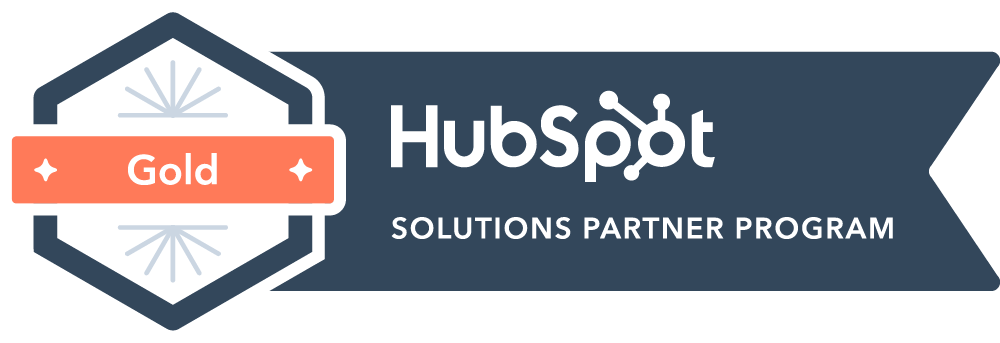Home | BLOG | The business card glow-up: fresh design trends in healthcare, health tech, biotech + life sciences
The business card glow-up: fresh design trends in healthcare, health tech, biotech + life sciences
Table of contents
The business card glow-up: fresh design trends in healthcare, health tech, biotech + life sciences
By: Laura Hill, Senior Growth Manager
In a world where AI search, automation, and predictive everything dominate the conversation, one unexpectedly enduring artifact is having a moment again: the business card. And honestly? It makes sense. In B2B healthcare, health tech, biotech, and life sciences, relationships still drive decisions. Trust still builds through conversation. And sometimes, the smallest physical touchpoint offers the clearest snapshot of your brand.
Business cards never truly disappeared, but they have evolved. The new wave is polished, modern, and much more strategic. Today’s cards blend thoughtful design with advanced tech, giving healthcare brands a smarter, more memorable way to introduce themselves.
Here’s the glow-up in full.
Before we get into the specifics of layout and aesthetics, it’s worth answering a question that comes up a lot:
Are there any popular trends in medical business card design right now?
Short answer—yes, and they’re evolving fast. The healthcare, health tech, biotech, and life sciences worlds are gravitating toward cleaner, more modern, more intentional design choices that feel aligned with how these industries communicate: clear, credible, and clutter-free. Which brings us to one of the most dominant trends happening right now…
Minimalist layouts that communicate clarity + credibility
One of the strongest trends in healthcare business card design is a shift toward clean, minimalist layouts. Buyers in healthcare and life sciences value clarity—so designs with generous whitespace, simple grids, and crisp hierarchy just feel right.
Modern minimalist cards tend to feature:
Easy-to-read typography
Intentional spacing
Simplified information hierarchy
Zero clutter or filler graphics
This approach reflects the values at the core of healthcare and health tech: precision, transparency, and trust. A clean card tells people your brand thinks clearly and communicates intentionally.
Digital business cards are becoming a mainstream must-have
As healthcare grows more hybrid, more global, and more mobile, digital business cards are quietly becoming the new standard. They offer instant access, instant saving, and a deeper way to tell your story.
Today’s digital cards often include:
- Mobile-friendly profiles
- One-tap vCard downloads
- Links to case studies, demo videos, product overviews + clinical validation
- Social profiles and scheduling tools
- Analytics on views, taps + engagement
For health tech, telehealth, SaaS platforms, population health tools, and AI-driven companies, digital cards simply match the way the business now moves. They make follow-up easier, help internal teams share your information quickly, and create consistency across every handoff.
Hybrid cards: where physical + digital meet
The biggest glow-up trend? Cards that connect the physical moment with a digital one.
Hybrid business cards combine tactile design with modern tech through:
• NFC chips (tap to open a digital card or microsite)
• QR codes that launch deeper brand content
• Smart acrylic or metal cards with dynamic digital profiles
• Back-end updates where your physical card links to content that can change over time
This is especially powerful for companies with complex offerings. A 60-second product walkthrough or animated explainer does the storytelling a two-inch card physically can’t.
For events like HIMSS, HLTH, BIO, RSNA, and JPM, hybrid cards are becoming the new go-to. One tap, and your brand lives on your prospect’s phone—not lost in a stack on their desk.
Interactive + dynamic content is the new differentiator
Healthcare and life sciences marketers are turning business cards into tiny brand portals.
A card can now link directly to:
• Product demo videos
• Animated workflows
• Clinical data summaries
• Whitepapers
• Case studies
• Executive bios
• Personalized campaign landing pages
These interactions help prospects understand your value quickly—especially when you’re selling enterprise tech, biotech platforms, or AI-driven clinical tools with multiple stakeholders.
AI-enhanced business card platforms
AI is also influencing the modern business card experience through:
• Auto-generated digital profiles
• Smart routing based on visitor behavior
• Lead enrichment synced to CRM
• Automated follow-up prompts
• Dynamic updates by role, region or product line
It’s subtle, but in B2B healthcare marketing, any friction you remove from the follow-up process matters.
Premium materials + tactile finishes that feel enterprise-grade
Even as tech evolves, the physical card still has its moment.
Healthcare, health tech, and biotech companies are investing in:
- Soft-touch matte finishes
- Heavy, layered card stock
- Edge painting + foiling
- Raised spot UV
- Cold foil accents
- Metal and acrylic cards
- Minimalist matte-black styles with glossy highlights
These finishes feel modern, intentional, and sophisticated. They send the message that your company sweats the details—and that level of polish tends to resonate in complex, regulated industries.
A great-feeling card leaves an impression long after the handshake ends.
Sustainability is becoming a brand signal
With ESG conversations rising across health systems, life sciences, medtech, and payer organizations, sustainable printing is becoming part of the brand story.
Current trends include:
• Recycled or FSC-certified paper
• Minimal-ink, clean designs
• Natural fiber stock
• Plantable seed cards
• Carbon-neutral printing options
Smart brands treat sustainability as a quiet but powerful credibility cue—not a gimmick.
Typography + color systems rooted in brand consistency
A big misconception is that business card design trends require new colors or trendy fonts. Not in healthcare. The strongest designs don’t reinvent your identity— they translate your existing brand system into a tighter, more modern composition.
Healthcare brands are refining:
• Typographic hierarchy (bigger names, cleaner subtext)
• High-contrast readability
• Strategic use of an accent color
• Ample spacing
• Simpler alignments
This creates a sharp, intelligent look while preserving the trust that comes from consistent branding. In healthcare marketing, consistency is a growth strategy.
Smarter front–back storytelling
Both sides of the card are now part of the story. The front delivers the essentials: name, title, logo, contact details. The back becomes a small, curated moment of brand expression.
That might include:
- An NFC or QR code
- A product tagline
- A single brand pattern or icon
- A campaign-aligned design element
It’s simple, but when done well, it’s memorable.
Why business cards still matter in B2B healthcare
Despite all the digital tools available, business cards remain a surprisingly powerful part of the healthcare marketing ecosystem. They’re tangible, portable, and personal. They give your brand a physical presence at the exact moment someone meets you for the first time.
A great card says:
“We’re polished.”
“We’re modern.”
“We care about details.”
“We communicate clearly.”
“We make things easy.”
In industries where trust is everything, that message sticks.
Final thought
The business card glow-up isn’t about nostalgia—it’s about opportunity. Healthcare, health tech, biotech and life sciences companies are blending design, technology, and strategy to create cards that feel modern, intelligent and worth keeping.
Small object. Big impression. Exactly the kind of brand moment B2B healthcare marketing thrives on.
AI disclosure: In alignment with our commitment to transparency, we want to disclose that this blog post was substantially generated with the assistance of artificial intelligence technology. Our team of healthcare experts collaborates closely with AI to ensure accuracy and relevance for our valued readers in the health tech and life sciences sectors.

Laura Hill, Marketing Manager at KNB Communications, is a seasoned marketer with over a decade of experience in full-stack marketing. Her expertise extends to the intersection of cutting-edge technology, data-driven insights, contemporary marketing approaches, and corporate branding. Laura excels in crafting and implementing high-impact marketing strategies, placing a strong emphasis on analytics and lead generation. Her work consistently drives outstanding results in digital marketing, showcasing impressive conversion rates. Moreover, Laura's meticulous monitoring of key performance metrics ensures the achievement of ambitious corporate goals.
Search





.svg)




